
Sustainable Landscape Design Tips for a Greener Yard
Published: 13/06/2025 | Updated: 13/06/2025
Key Highlights
-
Learn how sustainable landscape designs can lower water consumption and reduce the reliance on chemical fertilizers for eco-friendlier yards.


-
Discover the advantages of incorporating native plants that align with your local site conditions and enhance biodiversity.
-
Explore alternatives to traditional lawns, including rain gardens and groundcovers, to create environmentally conscious home landscapes.
-
Understand the benefits of using permeable pavers and recycled materials to innovate your hardscapes sustainably.
-
Support wildlife and pollinators in your yard by choosing diverse plantings and eliminating harmful pesticides.
Introduction
Making your yard greener starts with sustainable landscape design. This way, you take care of the environment and still have a nice home landscape. You can think about site conditions, good plant selection, and ways to save water to get a sustainable landscape and also keep it good-looking. Some ways to do this are to cut down on turf, put in rain gardens, or help build healthy soil. When you try these methods, your yard can have a positive impact on the planet. Take a look at some easy ideas and steps that will help turn your outdoor space into a new eco-friendly place.
Understanding Sustainable Landscape Design
Sustainable landscape design is about building outdoor spaces that are friendly to the environment and last a long time. It uses careful planning and new ideas to help with things like water use, climate change, and protecting biodiversity.
This is not just about making gardens look good, it is about making smart choices to avoid hurting the planet. People do things like planting native plants and putting in erosion control to help the land. The goal is to design spaces that fit in well with nature. But what makes a landscape sustainable? Let’s find out more.
What Makes a Landscape Sustainable?
Sustainable landscaping is about caring for the environment while making things work well. Plant selection matters a lot. When you pick native plants, they do better in the local area. These plants need less water and care, so you save time and resources. The right plants also give you good erosion control. They help stop soil from washing away and support local fauna like birds and animals.
Water use is very important in landscaping. Using low-water plants and smart irrigation can cut down on water waste but still keep your garden healthy. Simple changes, like making rain gardens or using xeriscaping, help by letting water soak in on-site. This controls erosion and helps plants grow.
Sustainability comes from good planning. You can use local materials, set up areas for wildlife, and add features like solar lighting. If you find the right mix of design and upkeep, your sustainable landscaping will look good and be kind to the planet. This way, you support a healthy environment and a nice outdoor space.
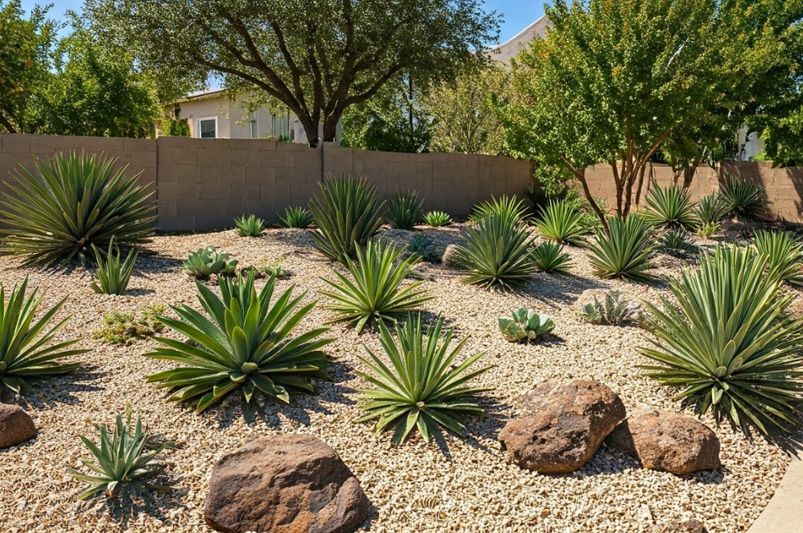
Benefits of Eco-Friendly Yard Practices
Eco-friendly gardening is a good choice for homeowners and the planet. This way of gardening gives you many benefits now and in the long run. Here are the main rewards:
-
Water Conservation: When you use smart watering and plants that need less water, you will use less of it. This is very helpful for places that often have drought.
-
Biodiversity Boost: Growing local trees and shrubs helps create a home for pollinators, birds, and lots of other animals that live near us.
-
Pollution Reduction: If you stop using chemical fertilizers and pesticides, there will not be as much runoff to dirty the water and harm the area.
-
Carbon Capture: If you plan your yard to include planting more trees and use nature-friendly ways, you will help cut down the amount of carbon dioxide in the air.
Having an eco-friendly yard is a smart way to support sustainability. You get to enjoy a nice, green space and know you help our earth, too. Now, let’s take a look at your yard’s natural setting so we can make the right changes.
Assessing Your Yard’s Natural Features
Knowing the current state of your yard is the first step for a good and sustainable landscape. You need to look at its topography, soil type, and how water moves in the yard. These things help you decide what kind of planting and irrigation will work best.
The different microclimates in your yard play a big part too. Some areas get more sun. Some places keep more moisture. Notice these changes and plan your landscape design so the right plants go in the right spots. By knowing these things, you can make a sustainable landscape that works well with the land and its natural flow. There will be more on how to check your soil health and the best ways to use sunlight next.
Evaluating Soil Health and Composition
Healthy soil is at the heart of every good garden. To start, test your soil to see what nutrients and how much organic matter it has. Add compost if you need to make the soil conditions better, so your plants can be healthy.
Decomposed plant debris, known as organic matter, helps with soil drainage and adds to erosion control. In places where the soil is hard or packed down, you can loosen it or use mulch. Doing these things over time will make the ground better, and your landscape will be much stronger.
It is also important to stop erosion. Keep the moisture in the soil by using mulch or other layers that let water pass through. Using all these steps together will help your soil stay strong and eco-friendly.
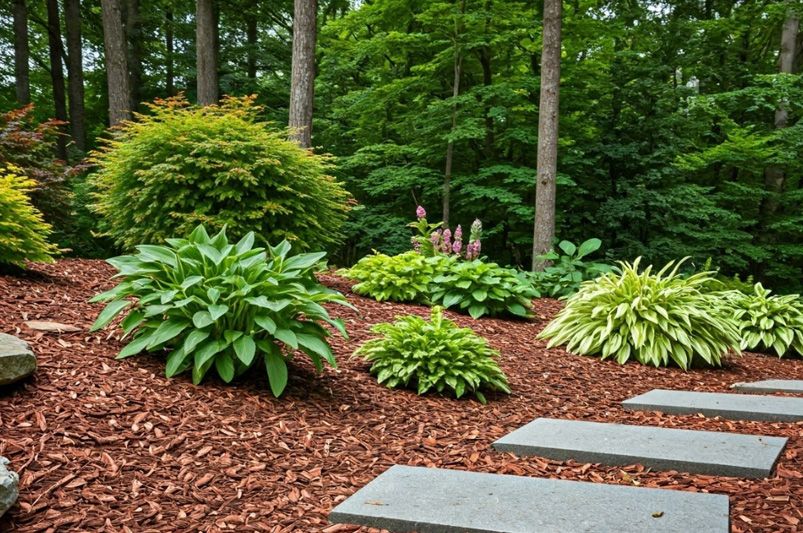
Analyzing Sunlight, Shade, and Microclimates
Sunlight is very important when you choose plants and create microclimates in your yard. Start by looking at how the light falls on your yard during the day. Some spots will offer more or less sunlight, and this helps you know which plants will do best in each place.
Shade in your yard also affects moisture. Shady spots usually hold onto water for longer, so that can be good for vegetation that need more moisture. You can put plants that do well in dry conditions in areas where the sun is strong.
Microclimates, which are small spots with different site conditions from things like precipitation or air movement, affect how your plants grow. If you pay close attention to these site conditions and microclimates, you can make sure each plant is in the right place. This way, your vegetation will stay healthy and grow better, even during drought or changes in moisture.
Choosing Native and Climate-Adapted Plants
Native plants are important for sustainable designs because they grow well in the climate conditions of your area. These plants need less work to keep them healthy. You do not need to water them much or use chemical fertilizers, so they save you time and effort.
When you also use plants that handle drought well and grow in your climate, you need even less water for your yard. Picking these types of plants makes your yard better at taking care of itself. With these, you bring in more local fauna, so animals like birds and insects can live there too. Now, let’s look at what makes native plants the best choice, and talk about good plants for pollinators in more detail.
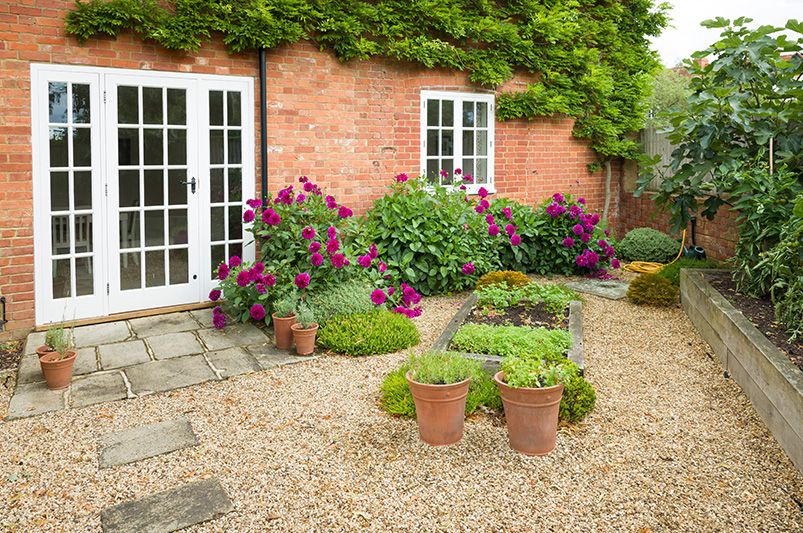
Advantages of Native Plant Species
Native plants are a great fit for the place where they grow. You can use the plant hardiness zone map to help you pick plants that work best with your area. If you choose these plants, you get many benefits like:
-
Reduced Maintenance Needs: These plants need less fertilizer and not as much water. This saves you both time and the resources you use.
-
Support for Local Fauna: When you use native vegetation, it gives food and shelter to birds and insects. This helps with the biodiversity in your area.
-
Protection Against Invasive Plants: Native plants do not get pushed out by aggressive or invasive plants. This helps keep your local ecosystems safe.
-
Cost Efficiency: Perennials come back every year. Because of this, you do not have to replace them as often, which saves you money as time goes on.
If you remove invasive plants and choose species that work best for your spot, native planting will be a key part of eco-friendly landscaping.
Selecting Drought-Tolerant and Pollinator-Friendly Plants
Picking plants that stand up to dry weather and help pollinators is a good way to work toward more sustainability. Here is a table to help you get some ideas:
|
Plant Name |
Benefits |
|---|---|
|
Lavender |
The flowers stand up to drought, and bees really like them |
|
Yarrow |
This plant loves dry places and brings in butterflies |
|
Coneflower |
It is good for pollinators and works well in areas without much water |
|
California Poppy |
Uses little water and is great for both bees and moths |
When you pick the right plant and put it in the right place, you help your garden get better and use less. This also makes it good for pollinators, plus it supports a healthy garden. It can be one of the best ways to work with sustainability right in your own yard.
Water-Wise Strategies for a Greener Yard
Smart water use is key to sustainable landscaping. Adding water-wise features like rain gardens can help lower runoff and stop pollution. Using drip irrigation and putting plants with the same water needs together makes sure water goes where it is needed most.
Rainwater harvesting systems are a good way to collect a lot of precipitation. These systems can help with water conservation goals in your landscaping. Let's look at these ideas in more detail below.
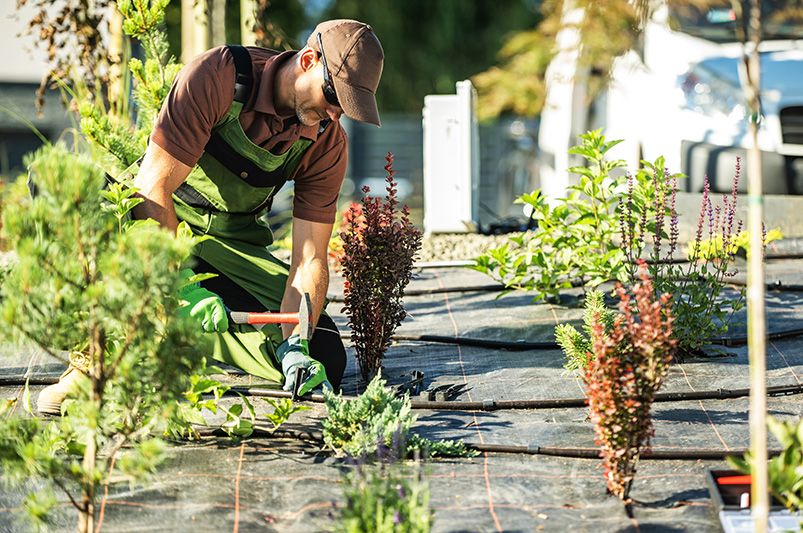
Installing Efficient Irrigation Systems
Modern irrigation systems help a lot with water consumption. Drip irrigation gives water right to the plant roots. This helps with less waste.
Weather-sensitive controls, like rain sensors, can stop watering when there is precipitation. These smart tools make sure you do not use extra water. Checking the system often helps you spot leaks or problems. This keeps everything working well.
These good ways of watering be used for many things, like horticulture or planting crops and gardens. With these tips, you save water with little effort.
Rainwater Harvesting and Graywater Use
Rainwater collection helps with sustainability because it lets people catch runoff and save it for later. You can use rain barrels, which are easy to handle, to give water to thirsty plants. People can also use graywater, which is water from inside the house that can be used again, to help with water needs.
However, both rainwater systems and graywater systems have some issues. You need to worry about pollutants, and you have to keep mosquitoes away. You can make it easier by closing up rain barrels and using filters with graywater systems. These steps help everything work more smoothly.
If you want to keep things simple, you can use rain gardens. Put them near your planting areas so they take in runoff water right in the ground. This way, you can keep things sustainable without needing extra equipment.
Building Healthy Soil for Sustainable Growth
Soil health is very important for a sustainable landscape. It is the base for the best landscape design. The way the soil is can change plant selection and how well plants grow. Adding organic matter, like compost, can improve the soil in many ways. It helps the soil keep more moisture and boosts the nutrients for your vegetation. This added organic matter also helps many small living things grow in the soil. These things make soil conditions even better.
Using mulching is a good way to work with natural processes. It keeps moisture in and helps stop erosion. These things are important if you want your home landscapes to stay healthy and full of life. When the soil is healthy, there is a good home for local fauna. Good soil lets plants and other life thrive. In the end, keeping up the health of soil is what can make your landscape design both eco-friendly and strong. It helps people build home landscapes that last and look good over time.
Composting Yard and Kitchen Waste
Turning yard and kitchen waste into compost is a simple way for homeowners to help with sustainable landscaping. When you use organic matter like kitchen scraps or grass clippings, you do not send them to landfills. This helps lower greenhouse gas emissions. The compost from these things makes soil conditions better and supports good plant health.
Using compost made from things like vegetable scraps and yard debris adds nutrients to your yard. It helps boost biodiversity in the landscaping around your home. This practice is also good for erosion control and keeps soil in place. When you compost, you increase the number of helpful microorganisms in the soil. That helps vegetation stay strong all year and the ecosystem in your yard gets better. Erosion is kept in check, and a healthy landscape is possible with only a little effort.
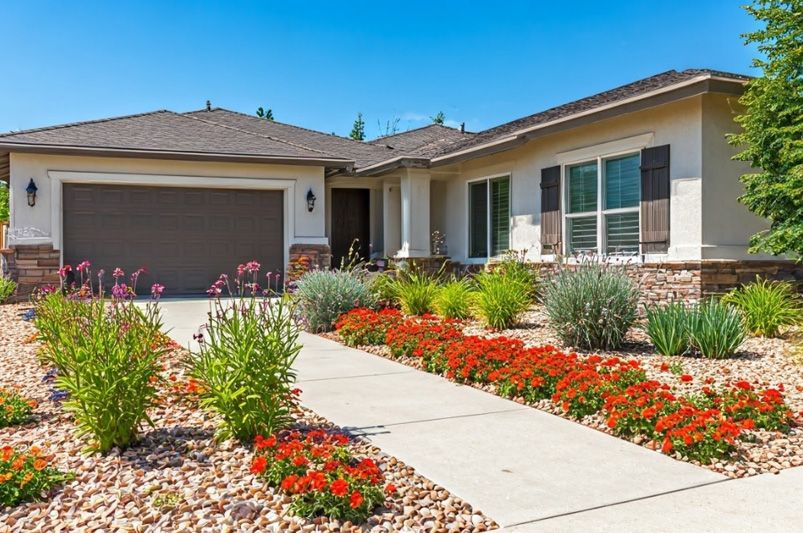
Mulching to Retain Moisture and Suppress Weeds
Using mulch in your landscape design can help your home landscapes in many ways. The mulch keeps moisture in the soil and helps stop weeds from growing. When you use organic mulches, like shredded bark or grass clippings, they do more than just look good. Over time, they break down and add organic matter to the soil, making the soil conditions better. This way, you can use less water, which is important for water consumption during a drought and keeps plant health strong.
A thick layer of mulch not only slows down water loss but also keeps invasive plants from taking over. This gives local fauna a better place to live and helps with biodiversity around your home. Using mulch is a good way to have healthy plants and protect your landscape design.
Reducing Lawn Areas and Rethinking Turf
Going beyond the usual grass lawns can help you create a sustainable landscape that does well in different climate conditions. You can try using native groundcovers or planting meadows. These help lower water use and keep soil healthy. They are good because they can fit many site conditions, and their foliage looks nice and brings in local fauna. If you add no-mow zones in your yard, it can help with biodiversity too. This also creates microclimates that are good for pollinators. When you rethink your turf in this way, you add value to home landscapes. You also use fewer chemical fertilizers and pesticides, which helps build a strong yard that matches your ideas for a greener space.
Alternatives to Traditional Grass Lawns
Exploring other choices instead of the usual grass lawns can help make the landscape more sustainable. You can use clover, native groundcovers, or drought-resistant perennials. These choices can cut down water consumption and add more biodiversity. They help support local fauna and welcome pollinators, which is good for the ecosystem. If you plant a mix of vegetation, it can make interesting microclimates and bring in helpful insects. These choices also mean you do not need to use a lot of chemical fertilizers or mow as much. You also get better erosion control and lower carbon in your home landscape.
Creating Groundcover Gardens and No-Mow Zones
Groundcover gardens can be a good way to replace regular turf. They help you use less water and need less work to keep up. These gardens can also bring more biodiversity to your landscaping. If you use native plants, you can make the soil conditions better and help local fauna like pollinators. This means bees and butterflies get the plants they need. No-mow zones can make your landscaping more sustainable because they cut down on the size of your lawn. When this happens, the need for chemical fertilizers and pesticides goes down, too. With these choices, the plant material grows well on its own. Over time, your yard will look great and you will see all the good that comes from using native plants and other ways to support nature.
Incorporating Eco-Friendly Hardscaping
Creating a sustainable landscape means planning your hardscape in a way that helps the environment. Using permeable pavers looks good, and it helps water soak into the ground instead of causing runoff. This keeps water in the soil, so it can refill local groundwater.
When you use recycled things for pathways and patios, it cuts down waste and keeps the ground’s natural shape, or topography. This can help local plants and animals. Picking this thoughtful path for your hardscape helps different kinds of plants and adds to local biodiversity. It also creates small microclimates that help plants and wildlife stay healthy. All of these steps make a positive impact on your home and the area around it.
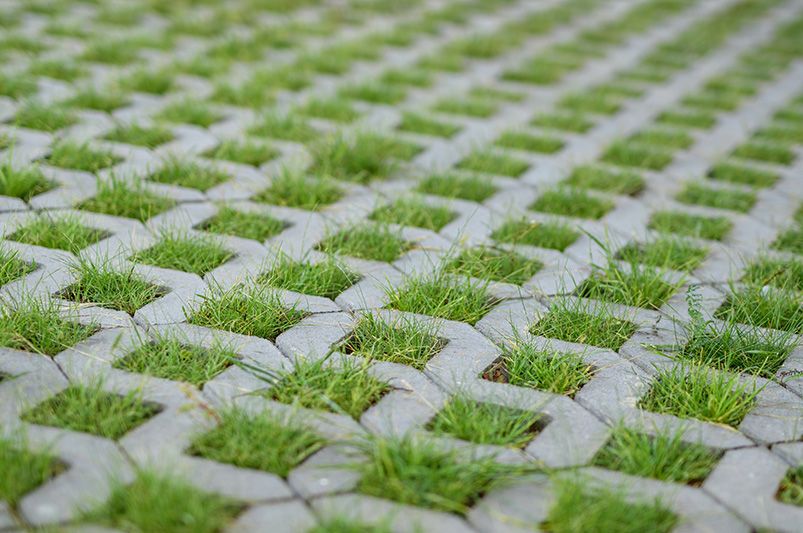
Using Permeable Pavers and Recycled Materials
Choosing permeable pavers and recycled materials can make your landscape design more sustainable. These building materials let rainwater move through the surface. This helps cut down on runoff and lets more water get into the ground. When you use reclaimed bricks or concrete, you help lower waste and give pathways and patios their own look. Using these options in your landscape design can create small microclimates that help support local fauna. This also leads to better biodiversity in your yard. When homeowners pick these sustainable materials, they make a positive impact on the environment. Plus, their yards stay beautiful and strong in different climate conditions.
Designing Paths and Patios with Sustainability in Mind
Creating paths and patios that focus on sustainability means picking eco-friendly materials and designs that fit into the natural landscape. When you choose gravel pathways or permeable pavers, you help water get into the ground better. This lowers runoff and helps filter water in a natural way. Planting native plants around these hardscapes brings in local fauna and supports more biodiversity. If you plan their placement well, you can also create microclimates in your yard. This is good for the land and helps stop erosion. When homeowners use a careful design process, they can enjoy outdoor spaces that look good, work well, and care for the environment.
Supporting Local Wildlife and Biodiversity
Making a space in your home landscapes that brings in birds, bees, and butterflies is very good for growing biodiversity. When you add native plants into your landscape design, it helps the local fauna because these plants give them the food and shelter they need. Using native plants also helps to keep a balanced ecosystem.
It is also a good idea to cut down on the use of pesticides and chemical fertilizers. Using fewer chemicals is better for creating a sustainable landscape. It helps natural pest control happen on its own. This is not just good for the wildlife, but it also helps the soil and lowers runoff. So, if you focus on native plants and less chemicals, you get a strong home landscape full of local biodiversity.
Creating Habitats for Birds, Bees, and Butterflies
Adding certain types of vegetation to your landscape design can help local fauna, like birds, bees, and butterflies. Using native plants that match the site conditions is a good idea. These plants give important food and places for animals to nest, which boosts biodiversity. Putting in different types of plant material brings in pollinators and helps keep the area healthy. You can make spots such as rain gardens and wildflower meadows as habitats for them. Cutting back on chemical fertilizers and pesticides also helps the area be more full of life. This way, you get to enjoy gardening and make a positive impact on the environment at the same time.
Avoiding Chemicals and Encouraging Natural Pest Control
Using organic ways in landscape design can help plant health get better and build a stronger, more lively ecosystem. When homeowners stay away from chemical fertilizers and pesticides, they make a balanced space. This helps attract good insects such as pollinators and the bugs that get rid of pests. Some planting methods, like putting certain plants together or using traps for bad bugs, help keep more life in the yard. These actions create a sustainable landscape. They also cut down on harmful runoff and help keep the soil conditions good. If the soil is healthy, native plants will grow well with the local fauna too.
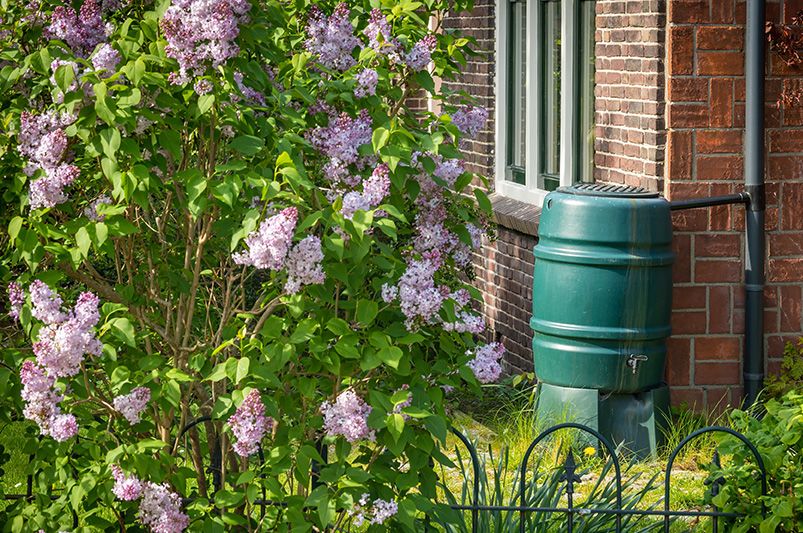
Conclusion
Starting a sustainable landscape project brings real benefits for homeowners and the environment. When you use good practices like building healthy soil, cutting down lawn areas, and helping local wildlife, you help the ecosystem around you. Using things like compost and mulch makes the soil better. Good plant selection also helps the landscape stand strong against climate change. The choices you make in your landscape design will not only help boost biodiversity, but they will also make a positive impact on your area. This helps you build a greener and more sustainable future for everyone.
Frequently Asked Questions
How Can I Make Sure My Landscape Design is Sustainable?
To ensure your landscape design is sustainable, focus on native plants, water-efficient solutions, and eco-friendly materials. ShrubHub’s expert landscape designers can help you create a beautiful yard that’s both low-maintenance and environmentally responsible.
Which plants work best for sustainable landscapes in the United States?
Native plants like coneflowers, black-eyed Susans, and butterfly milkweed can do well in many parts of the U.S. These plants do not need much water, and they help local wildlife. Using them in your landscape design can help with sustainability and also support biodiversity. They make your yard or garden easier to care for, and good for the environment. When you add these to the landscape, you help the earth and all the animals around you.
How can I conserve water without sacrificing a beautiful yard?
To save water and still have a nice yard, you can try xeriscaping with plants that do well in drought. Use effective watering systems, like drip hoses, to get water to the roots. It also helps to set up rain barrels, so you can collect water to use later. Plant your flowers, grass, or shrubs together if they need the same amount of water. This way, you will use less water but keep your yard looking good.
Are eco-friendly yards more expensive to create or maintain?
Making and taking care of green yards can cost more at the start. This is often because of the materials used and the way you have to do things. But after some time, the money you save on water and work can add up. In the end, these yards can be better for your wallet. So, choosing eco-friendly yards can work out well over the years.
How do I attract pollinators while keeping pests away?
To bring in good pollinators and keep away pests, use planting methods with native flowers and herbs. These plants can help pull in helpful bugs. Try companion planting, like growing marigolds with your vegetables. This can stop many bad pests from coming. Do not use chemical pesticides so the area will be safe for all pollinators.


